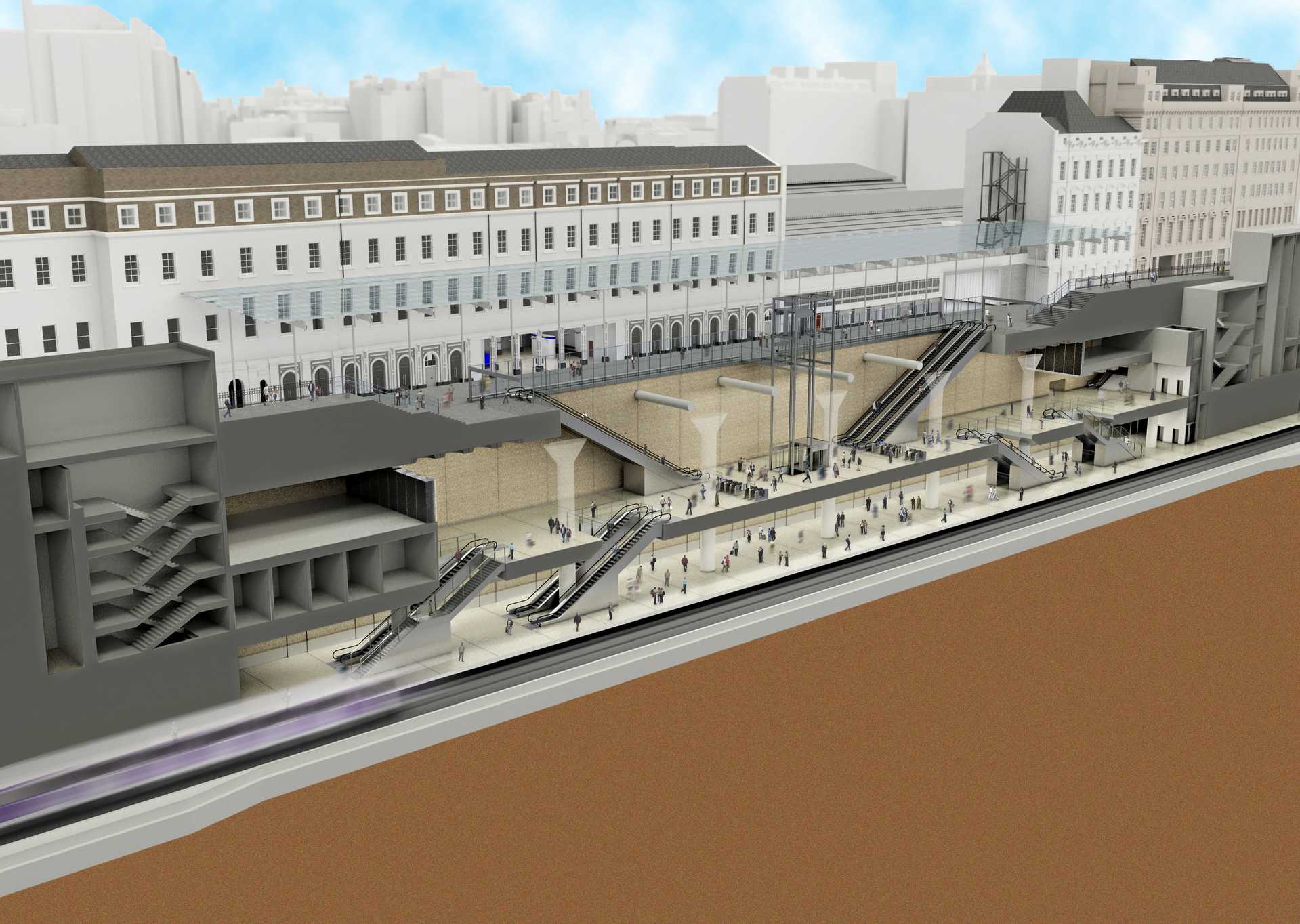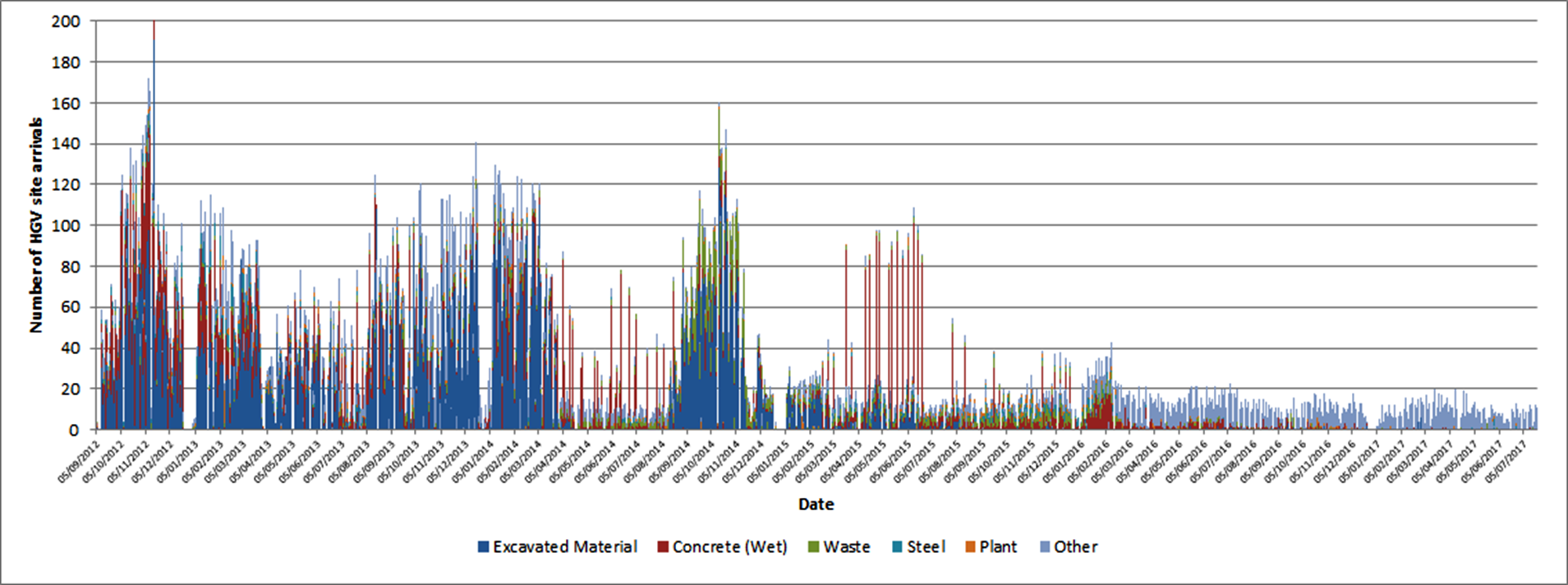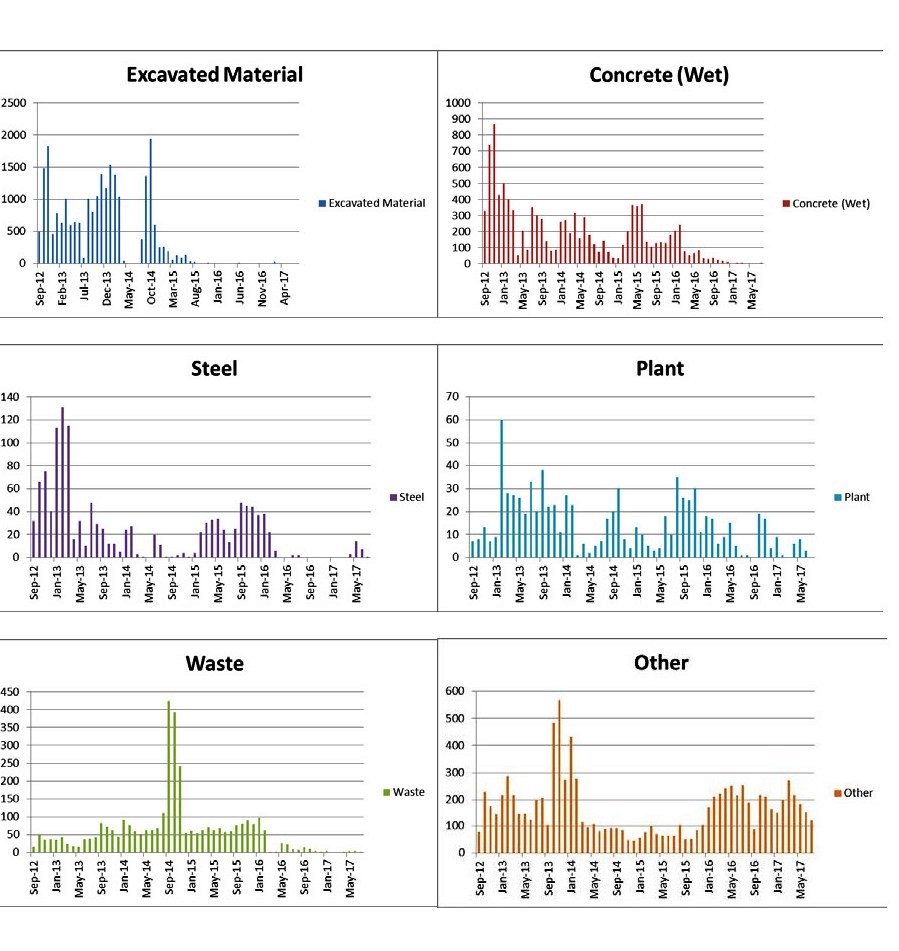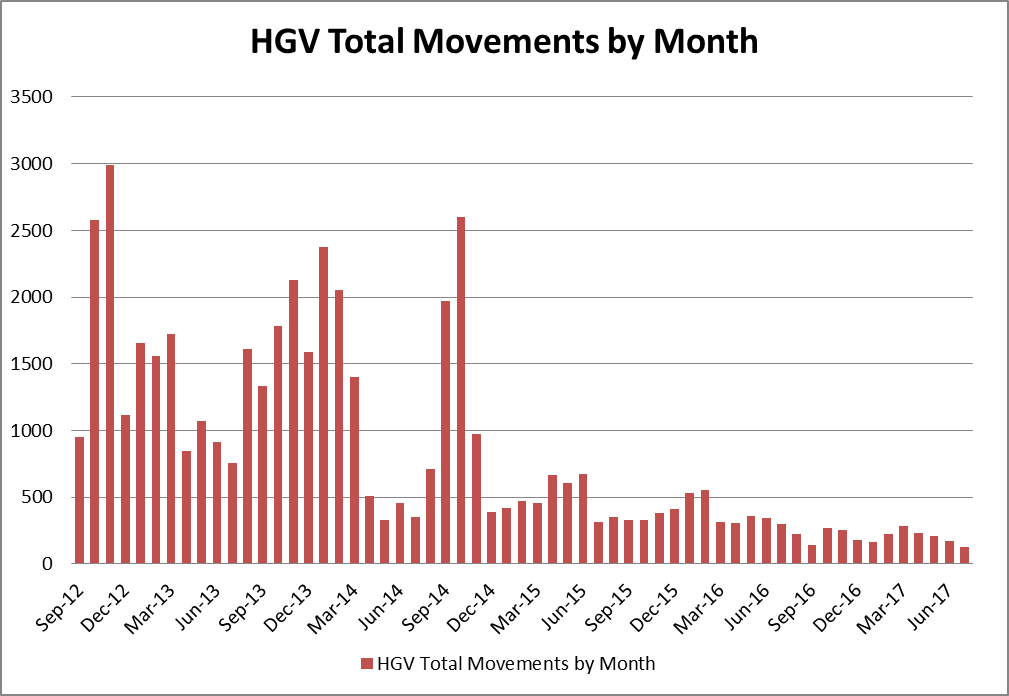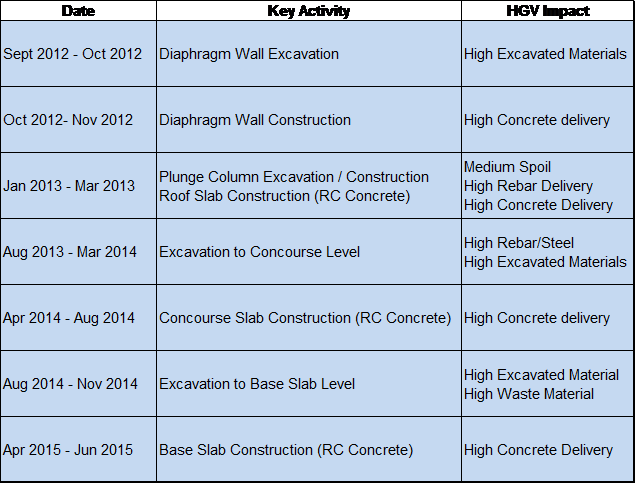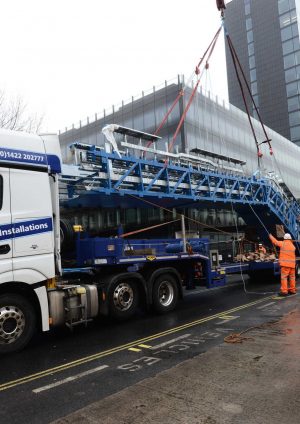
HGV Movement at Crossrail’s Paddington Station
Document
type: Micro-report
Author:
Rob Paris MSc MCIWEM MIES, Brigid Leworthy DMS MSc MIET
Publication
Date: 09/07/2018
-
Abstract
Paddington station has been used as an example to detail the controlled manner in which HGV lorry movements were managed during construction over a five year period. This paper provides a summary of the site construction, the HGV movement logged, and how that movement is linked to construction at the site. It also shows the the lorry routes, as developed in discussion with the council.
The initial summary outlines the station construction and then the HGV movement data, as collected from the vehicle management planning system (VMPS). It is then mapped against the construction taking place. It breakdowns the vehicle movement by type of material being moved and also provides graphical representations demonstrating the peaks and troughs associated with different stages of the construction process.
This information would be of use to both Clients and Contractors involved in any major project looking to develop their logistics planning in order to minimise local impact and reduce disruption whilst construction works take place.
-
Read the full document
Introduction
Crossrail identified logistics early on as a key priority and that it should be proactively managed and dealt with collaboratively with the individual Contractors working on the project. Other papers have been produced in the Learning Legacy detailing the logistics approach and the IT system developed but this short paper uses a specific project example to demonstrate the level of HGV movement around a project site and how that related to the different stages of construction. It shows that different stages require different materials and types of work to be carried out which all impact on the lorry movement around a site. The paper then provides information on what steps can be taken to mitigate the impact on the surrounding area.
Paddington station has been used as it provides a range of stages of construction and clearly demonstrates the peaks and troughs of lorry movement dependent on what is happening during the project lifecycle.Paddington Station Construction – High Level Overview
Paddington station was constructed in a densely populated area on a restricted site and adjacent to listed buildings. Limiting ground movements was a key to minimising the risk of damage to adjacent properties, utilities and infrastructure.
Although, like other Crossrail Central stations, Paddington was to be constructed on a constrained site, it had the benefit that the entire station could be constructed beneath an existing road, Eastbourne Terrace. The complete station, including ticket hall, concourse, platforms etc could therefore be contained within a single rectangular box at a relatively shallow depth.
Figure 1 – Paddington cut away section
The following is a brief outline of Paddington station and the key elements of construction which influenced the lorry movements associated with the project:
- Entirely located beneath an existing road (Eastbourne Terrace).
- Construction of the ticket hall did not require demolition of major building structures (other than the taxi canopy)
- Constructed from a single site
- Station was constructed as a cut and cover box
- Construction required temporary closure of Eastbourne Terrace.
- Relatively straight forward ground conditions (London Clay)
- Two TBMs passed through the area after the diaphragm walling was complete but before the box was complete. Station construction continued while tunnelling works progressed eastward.
- Single Diaphragm-walled box – 1.0 & 1.2m thick panels.
- Total length = 575m
- Top-down construction was used
- Adjacent to Grade I listed Paddington Station
- One local authority (City of Westminster)
- Adits link to existing underground stations. Ground level connection to Paddington Mainline station.
HGV Movements at Paddington
All of the lorry movements within each of the Crossrail sites were managed by the Crossrail traffic co-ordination centre. This acted as a central hub, supporting the contractors and their supply chains with their logistics arrangements 24 hours a day, 365 days per year. How this was developed is detailed in the Crossrail logistics LL paper.
Based on data captured in the Crossrail Vehicle Movement Planning System (VMPS), between September 2012 and July 2017 , the data in Figure 2 below shows the arrival of HGVs into Paddington on any given day and the material associated with the vehicles.
The data collected could be drilled down to identify the movement of vehicles into the station site on any given day and any time within a 24 hour period. The graph shows the daily lorry arrivals at Paddington over the 5 year period of construction.
Figure 2 – Paddington Daily arrival of Vehicles and Associated Load – Sept 2012-2017
The graph above shows the maximum daily lorry arrivals over the course of the Paddington construction programme. 200 arrivals a day were received for a short time at the start of the main construction works which involved the construction of a diaphragm wall for the station. These lorry movements represented approximately 0.5% of the 40,000 average daily number of vehicles travelling along the main lorry route which was the A40/Marylebone Road to and from the Paddington worksites [1]
Regular lorry number peaks of between 100 and 150 arrivals to the site per day were experienced over a three year period (with several long periods where lorry numbers were in the region of 50 arrivals per day).
In order to demonstrate more clearly, the impact of numbers for different types of load is shown on a monthly basis in the following breakdown in figure 3. Each of the graphs show the lorry numbers for each specific type of material:Figure 3 – HGV Lorry Numbers by Material at Paddington Sept 2012 – July 2017
Overall the number of HGV movements by month looked like this:
Figure 4 – Total HGVS Movements Paddington, Sept 2012 – July 2017
HGV Movements Linked to the Key Elements Specific to Construction at the Paddington Site
Table 1 below links the general impact on the numbers of HGV movements required given the major elements of construction being carried out at any given time during the construction of Paddington Station. This table shows why the peaks appear in figure 4 above.
Table 1 –HGV Movement Linked to Construction at Paddington
HGV Approved Routes
In order to ensure mitigation of the impact of high lorry movement in the area Crossrail liaised with Westminster council to identify the routes that could be used to access the site. In such a built up urban area the options can be limited but working in collaboration with the council ensured that the optimum routes were used. Figure 5 below shows the lorry routes that were approved for use in Westminster. These routes, (and only these), were used variously by HGVs serving the Paddington Station worksite depending upon their source and destination.
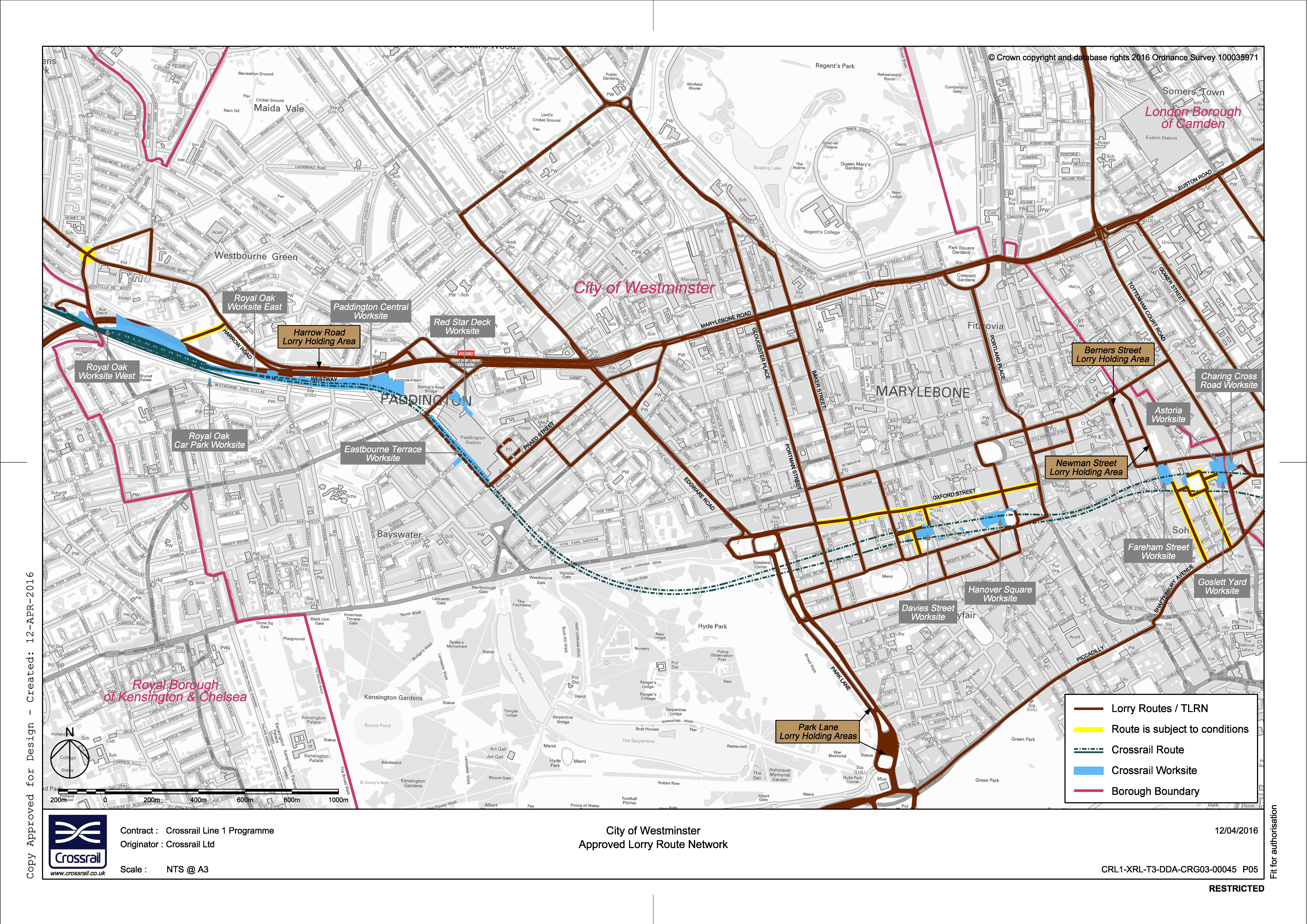 Figure 5 – City of Westminster – Approved Lorry Route Network
Figure 5 – City of Westminster – Approved Lorry Route NetworkImpact on the Local Area and Residents
Crossrail reduced the impacts of its lorries at Paddington through a number of ways including:
- Vehicle booking and management system
- Lorry holding areas to reduce congestion on the local roads
- Training over 9,000 lorry drivers in cycle awareness;
- Making additional safety equipment mandatory on all lorries and vans delivering to Crossrail sites
- Translating road safety information for drivers into 18 different languages;
- Organising safer cycling awareness events near construction sites to help cyclists become more aware of the risks of cycling next to lorries; and
- Fitting road safety mirrors around construction sites.
- Establishing a Traffic Liaison Group with representatives from local authority professionals
- Holding Community Liaison Meetings to hear feedback and disseminate information
Throughout the construction period residents and businesses could at any time contact the Crossrail Helpdesk if there were any issues concerning the Paddington construction site. Information from the Crossrail stakeholder database shows that there were 176 valid complaints in total for Paddington between 1st September 2012 – 31st July 2017. Of these the lorry controls and traffic management complaints accounted for 16 complaints (or 9% of the total), of which 7, (4% of the total), directly related to HGV movement.
Conclusion
For Crossrail, such a large complex project, logistics planning was always going to be required. Taking just one station to demonstrate how the logistics was managed on one site, serves to provide an insight as to what was involved and the numbers of lorries that had to be accommodated. To manage the process as effectively as possible required collaboration with the Local Authority, the Contractors and the public. There is always going to be an impact on the area with a project of this nature taking place. However, collaboration with the appropriate stakeholders is key to effectively managing the process and leads to as little disruption and impact on the surrounding area as possible. In this case, the result of the mitigating processes was evidenced by only seven specific complaints linked to HGV movement around Paddington over a five year period.
References
[1] Department of Transport, 2016, AADF traffic data [online] available at: https://data.gov.uk/dataset/gb-road-traffic-counts . Accessed January 2018.
Department of Transport, 2015, Manual Count Camden [online] available at: https://www.dft.gov.uk/traffic-counts/cp.php?la=Camden#47245 . Accessed January 2018.
-
Authors
Brigid Leworthy DMS MSc MIET - Crossrail Ltd
Brigid is currently the Crossrail Learning Legacy Co-ordinator bringing together much of the content on the website and co-ordinating liaison with the Learning Legacy partners. Brigid trained as an engineer and then moved into project management. She has worked for a number of large organisations including BT, the London Fire Brigade, The British Red Cross and the University of East London. She has a postgraduate Diploma in Management, a Masters degree in Project Management and is a qualified PRINCE2 practitioner.
